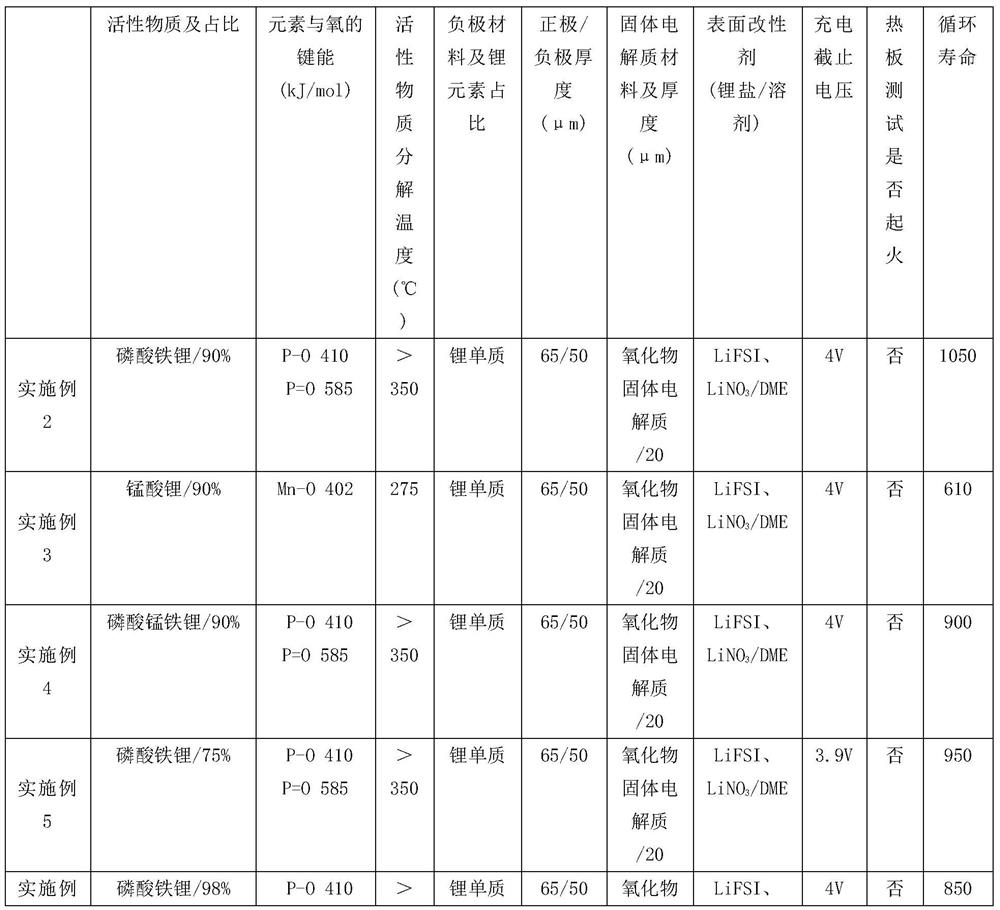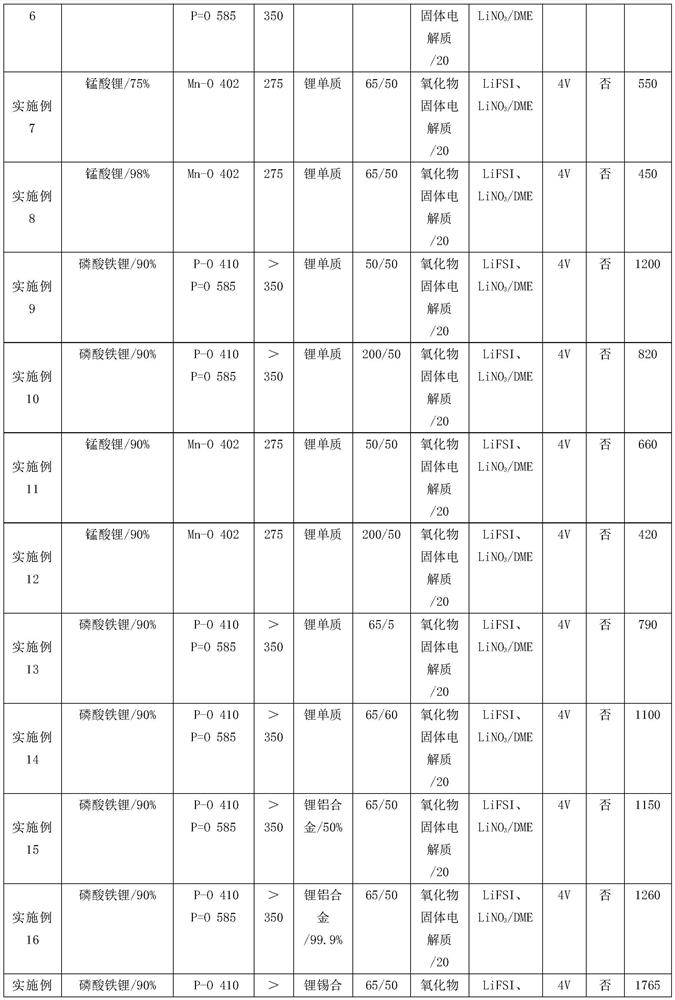Positive electrode and high-safety and high-cyclicity lithium metal solid-state battery
A solid-state battery, lithium metal technology, used in lithium batteries, battery electrodes, non-aqueous electrolyte batteries, etc., can solve problems such as temperature rise, aggravate thermal runaway of cells, and affect battery cycle stability, so as to ensure cycle performance and cycle stability. Longevity, improvement of interfacial contact problems, effect of reducing the possibility of spontaneous combustion
- Summary
- Abstract
- Description
- Claims
- Application Information
AI Technical Summary
Problems solved by technology
Method used
Image
Examples
Embodiment 1
[0027] A high-safety and high-cycle lithium metal solid-state battery includes a positive electrode and a negative electrode, a solid electrolyte and a surface modifier for modifying the interface of the solid electrolyte between the positive electrode and the negative electrode.
[0028] Specifically, the positive electrode contains an active material, and the active material includes one or more of lithium manganate, lithium iron phosphate, and lithium iron manganese phosphate, and the bond energy between the elements contained in the active material and oxygen is greater than 390kJ / mol, and the active material decomposes The temperature is greater than 250°C.
[0029] The bond energy here refers to the energy absorbed by the complete dissociation of 1 mol gaseous molecules into gaseous atoms distributed to each covalent bond in the structural formula. The decomposition temperature here is defined as: assemble the positive electrode containing the active material into a lith...
Embodiment 2
[0036] A high-safety and high-cycle lithium metal solid-state battery includes a positive electrode and a negative electrode, a solid electrolyte and a surface modifier for modifying the interface of the solid electrolyte between the positive electrode and the negative electrode.
[0037] Specifically, the positive electrode material includes the active material lithium iron phosphate, the bond energy of P-O in the active material is 410kJ / mol, the bond energy of P=O is 585kJ / mol, and the decomposition temperature of the active material is greater than 350°C. Wherein, the active material accounts for 90% by weight of the positive electrode material, and the thickness of the positive electrode is 65 μm.
[0038] The negative electrode includes lithium element with a thickness of 50 μm, the solid electrolyte includes an oxide solid electrolyte, and the thickness of the solid electrolyte is 20 μm, and the surface modifier includes LiFSI and LiNO 3 DME solvent. The charging cut-o...
Embodiment 3
[0040] A high-safety and high-cycle lithium metal solid-state battery. The difference from Example 2 is that the positive electrode material contains the active material lithium manganate, and the bond energy between the manganese element and oxygen contained in the active material is 402kJ / mol, and the active material decomposes The temperature was 275°C.
PUM
| Property | Measurement | Unit |
|---|---|---|
| Thickness | aaaaa | aaaaa |
| Thickness | aaaaa | aaaaa |
| Thickness | aaaaa | aaaaa |
Abstract
Description
Claims
Application Information
 Login to View More
Login to View More - R&D
- Intellectual Property
- Life Sciences
- Materials
- Tech Scout
- Unparalleled Data Quality
- Higher Quality Content
- 60% Fewer Hallucinations
Browse by: Latest US Patents, China's latest patents, Technical Efficacy Thesaurus, Application Domain, Technology Topic, Popular Technical Reports.
© 2025 PatSnap. All rights reserved.Legal|Privacy policy|Modern Slavery Act Transparency Statement|Sitemap|About US| Contact US: help@patsnap.com



